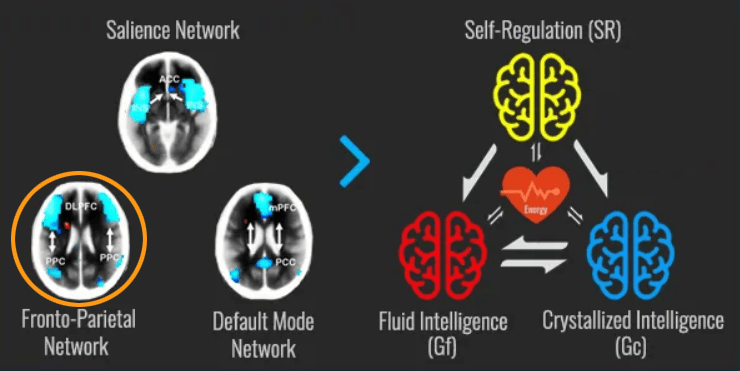.
Energy – as the capacity for doing work – is necessary for the maintenance of homeostasis in living systems and all the physiological and cognitive processes that occur within them. Without energy, there is no life: complex structures do not assemble or replicate. The flow of energy is a crucial factor distinguishing the living-breathing organism from a corpse.
Bioenergetics is a the study of energy flow through living systems – how organisms harvest and consume energy.
Metabolism is is the set of life-sustaining chemical reactions in organisms. Metabolism can be divided into:
- Catabolism – the breakdown of molecules to obtain energy
- Anabolism – the synthesis of all compounds needed by the cells
In a universe being dragged into disorder by the second law of thermodynamics, living organisms must expend energy to maintain their complex organization. The energy demand is satisfied by food intake, breathing and ATP chemistry.
Intelligence and Bioenergetics
Bioenergetics of fluid intelligence
The great IQ scholar Charles Spearman, who discovered the g-factor back in the early 1900s, interpreted general intelligence in terms of energy flow:
[I] regard g as measuring something analogous to an ‘energy’ that is to say, it is some force capable of being transferred from one mental operation to another different one. Even on the physiological side, there are some grounds for hoping that some such energy will sooner or later be discovered in the nervous system, especially the cerebral cortex. – Charles Spearman, 1927
How Spearman’s intuitions about the bioenergetic basis of intelligence can be interpreted in the light of state-of-the art theory and research? It is now known that general intelligence is correlated with the concentration of the brain biochemical NAA (N-acetyl aspartate).
NAA is a biochemical marker of neural energy production and efficiency. High NAA levels in frontoparietal network (FPN) fluid intelligence regions in the brain predict higher levels of spatial and verbal reasoning.
.
Metabolic Efficiency
The brain has very high energetic needs. It has been estimated that the human brain accounts for between 44% and 87% of resting metabolic rate during infancy, childhood, and adolescence. Glucose consumption of adult brains is around 20-25%, even though it only accounts of 2% of body mass.
More intelligent brains are more metabolically efficient. They use less energy to solve the same problems: for example, low scores on the Raven’s Advanced Progressive Matrices IQ test correlate with increased glucose consumption in the brain during problem solving.
The G CODE : Information Processing Bioenergetics
FLUID INTELLIGENCE BIOENERGETICS
Information processing high energy demands, and access of ‘difficult-to-reach’ brain states with high energy demands, with solutions efficiently reducing metabolic energy demands as well as energizing metabolism through inferred incentives and value as a result of reasoning processes.
CRYSTALLIZED INTELLIGENCE BIOENERGETICS
Information processing high energy demands, and access of ‘difficult-to-reach’ brain states with high energy demands, with solutions efficiently reducing metabolic energy demands as well as energizing metabolism through inferred incentives and value as a result of reasoning processes.
‘Free energy’ can be defined as information complexity, uncertainty, error, violations of our expectations or surprise. Free energy can be thought of as information entropy. Whenever we have a problem to solve, a goal to attain, or something to learn, there is information entropy to process.
The more information entropy you have to process, the more metabolically costly it is – the more glucose and ATP it consumes. Thus there is a fundamental link between information processing and bioenergetics.
The higher your IQ, the less the metabolic cost of your information processing.
The more resilient you are, the more information entropy you can tolerate – without suffering the effects of burnout and oxidative stress in your brain.
G CODE brain training can help you develop an intuitive sense of positive energy flow in your information processing, with an experience of energy-efficiency through well-learned crystallized skill-sets, and the ability to quickly assimilate and dispel information entropy and find new sources of value through fluid intelligence (IQ) – as well as the energetic motivational states needed to embrace the high energy challenges that are needed to evolve.
